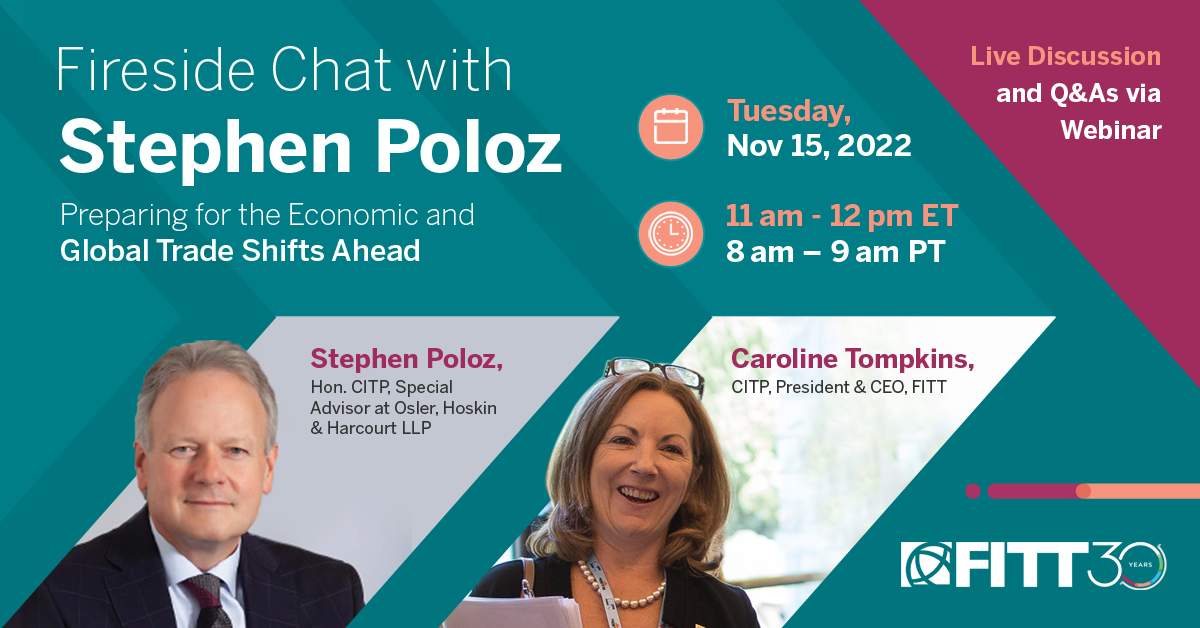
In 2016 Canada should focus and exports, experts say.
Export development and investment in trade enabling infrastructure are the two key elements that should keep the Canadian economy steady in 2016.
A rough start to 2016
Despite their best efforts, however, the experts that presented the Canadian Chamber of Commerce’s Crystal Ball Report in Ottawa on January 28 warn that the Canadian economy is in for a bumpy 2016.
“The worst start to a year on record,” said Perrin Beatty, CEO and President of the Canadian Chamber of Commerce in the event’s opening presentation.
Prices of oil reached the level where the lid of the barrel costs more than what’s inside the barrel.
According to Beatty, in 2016 Canada’s economy will face many challenges such as high consumer debt, an overheated housing market, and the inability to rely on traditional sources of growth, such as natural resources or internal consumer spending.
A deep divide in the nation’s business community
The Canadian business community seems to be deeply divided in its outlook, between optimism in sectors that are experiencing rapid growth such as forestry, automotive and technology, and gloom in the mining and energy sectors stricken by low commodity prices.
“The turbulences wreaking havoc in certain parts of the economy are actually fueling a spectacular, double-digit growth in other parts of the economy,” said Peter Hall, Vice President and Chief Economist for EDC and a contributor to the report.
Hall also added that because of the makeup of the Canadian economy the exports are really the engine for moving forward. “And I am not just saying this because I am representing EDC,” he emphasized.
Many Canadian businesses share this sentiment. According to Canadian Chamber of Commerce’s report, most businesses expressed enthusiasm over prospects in the U.S. and Europe, whose economies are expected to grow in 2016. Beatty explains,
Where is growth going to come from? Not consumption – consumers are tapped out. Government spending cannot provide much lift. Most provinces are in cut-back mode. We cannot rely on natural resources anymore. Housing is overbuilt. That means we have to start exporting like crazy.
Exporting to other countries, however, is not as easy as it seems, says Corine Pohlmann, Senior Vice President for the Canadian Federation of Independent Businesses that represents over 100,000 small business owners from coast-to-coast. Small businesses contribute over 50% to Canada’s GDP and provide over 90% of all private sector jobs.
Time to reduce burdens on exporters
“The cost of doing business with the U.S. is still expensive for many companies. We really should start focusing on reducing those types of expenses. There are still too many surprises there. We need to decrease financial and regulatory burden,” Pohlmann said.
Responding to Pohlmann’s concern, Beatty said that enhancing trade enabling infrastructure as well as trade and regulatory harmonization are critical for the economy to grow.
For many industries in the knowledge economy, regulations, ownership requirements and restrictions on data flows can be the most difficult barriers to success. Canada must move quickly to ratify the TPP and a comprehensive economic and trade agreement with Europe.
Ratifying free trade agreements with nations like China will help many small Canadian businesses feel less ‘intimidated’ and help them to understand what needs to be done to access these markets.
Panel experts also identified the shortage of a qualified workforce as a major obstacle for growth. According to the Crystal Ball report, Canadian businesses are facing skills gaps and mismatches right across the board, creating an urgent need for new immigrants and for the skills and education aligned with the needs of employers.
Summarising the outlook for 2016, Hall said that economic turbulence comes with positives and negatives.
Volatility has to come with the growth. Our job is look for those sources of growth, and when we find them to take as much advantage of them as we possibly can.
Do you think Canadian exporters can turn the economy around in 2016? Do you plan to take advantages of the opportunities out there and start “exporting like crazy?”








disqus comments